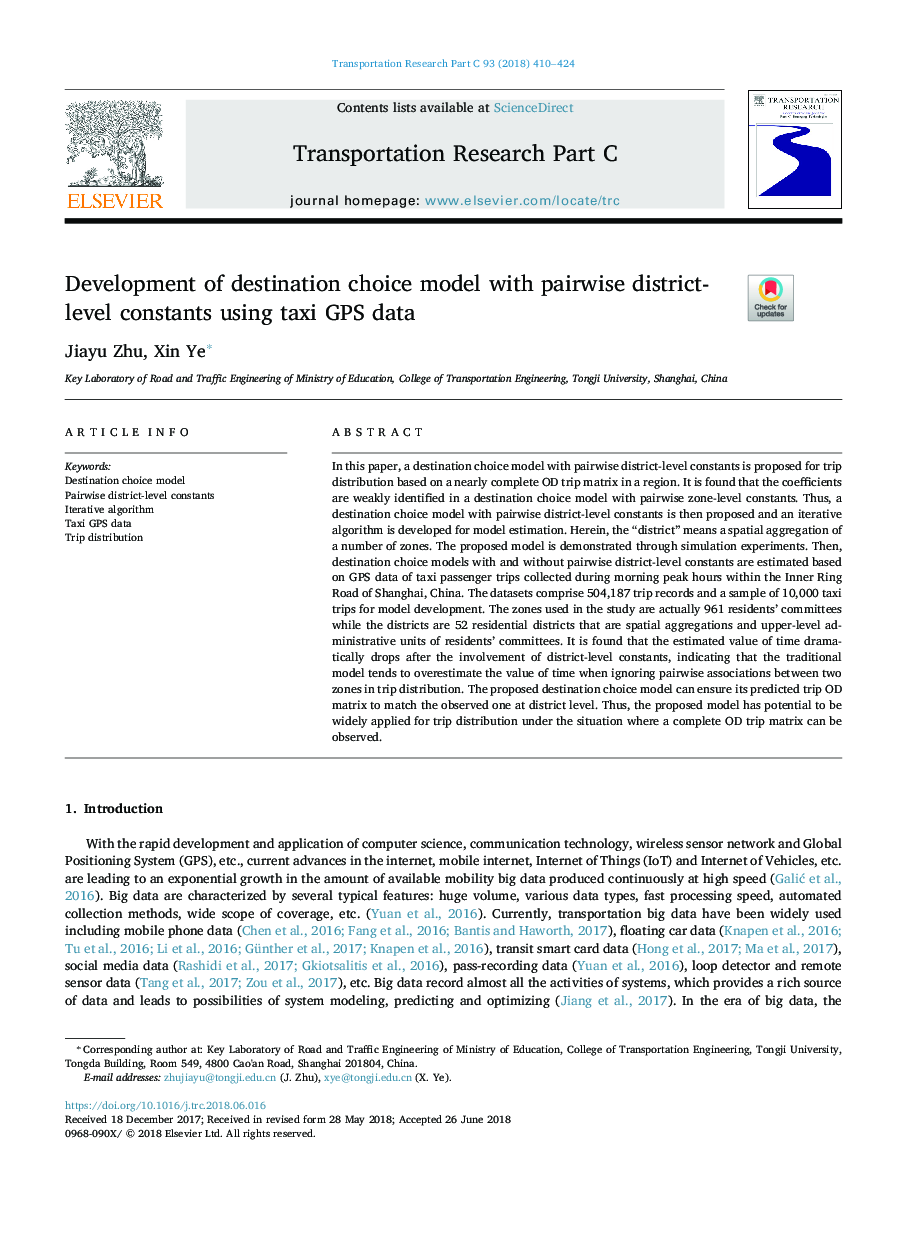| Article ID | Journal | Published Year | Pages | File Type |
|---|---|---|---|---|
| 6935780 | Transportation Research Part C: Emerging Technologies | 2018 | 15 Pages |
Abstract
In this paper, a destination choice model with pairwise district-level constants is proposed for trip distribution based on a nearly complete OD trip matrix in a region. It is found that the coefficients are weakly identified in a destination choice model with pairwise zone-level constants. Thus, a destination choice model with pairwise district-level constants is then proposed and an iterative algorithm is developed for model estimation. Herein, the “district” means a spatial aggregation of a number of zones. The proposed model is demonstrated through simulation experiments. Then, destination choice models with and without pairwise district-level constants are estimated based on GPS data of taxi passenger trips collected during morning peak hours within the Inner Ring Road of Shanghai, China. The datasets comprise 504,187 trip records and a sample of 10,000 taxi trips for model development. The zones used in the study are actually 961 residents' committees while the districts are 52 residential districts that are spatial aggregations and upper-level administrative units of residents' committees. It is found that the estimated value of time dramatically drops after the involvement of district-level constants, indicating that the traditional model tends to overestimate the value of time when ignoring pairwise associations between two zones in trip distribution. The proposed destination choice model can ensure its predicted trip OD matrix to match the observed one at district level. Thus, the proposed model has potential to be widely applied for trip distribution under the situation where a complete OD trip matrix can be observed.
Related Topics
Physical Sciences and Engineering
Computer Science
Computer Science Applications
Authors
Jiayu Zhu, Xin Ye,
